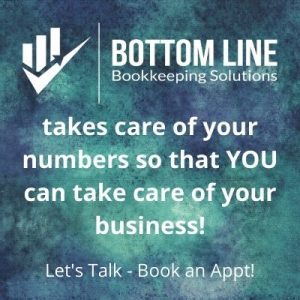 Today's guest post is from Jasper Blake, co-founder of the Passionate Entrepreneur's Network and member of my Profit Club coaching program.
Today's guest post is from Jasper Blake, co-founder of the Passionate Entrepreneur's Network and member of my Profit Club coaching program.
I asked him to write a post with his biggest take away from our mastermind last week. Want to learn more about our coaching programs? Get started by taking our free assessment.
Why Work with a Coach
Unless you have actually worked with a business coach (or even a life coach for that matter), it is very difficult to fully understand the value that they can bring to your life and business.
I have just returned after our second 2-day coaching intensive as a member of Michele Scism’s Profit Club coaching program and I wanted to impart two very simple but important lessons I learned while I was there – one is that whatever the cost of having a business coach it is always worth every penny (when you get the right one), and that tracking your sales underpins how successful your business becomes.
In this post I want to share a very simple method for tracking ongoing sales conversations, one that is deliberately low tech, but that gives you a structure and purpose to what is the most important activity of your entire business – making sales.
As a creative entrepreneur it can be very easy to get caught up in the process of doing what you love to do – create products that are going to help your clients and customers. A lot of creatives hate getting bogged down in “the numbers” – a wall comes up and their eyes glaze over as soon as the words “quarterly sales figures” are mentioned. But as solo-entrepreneurs we have to be our own CFO’s – even if we are hiring someone to do our bookkeeping and accounts. You have to know whether you are “making it” – or “going down in flames.”
Selling is a Conversation
It doesn't really matter whether you are selling a product or selling a service, ultimately the selling boils down to a conversation somewhere along the line. I’m not talking so much about a multi-product store so much but more about high priced pieces of art, or service or coaching programs, courses, and so on.
Anyone in business knows that not everyone is going to buy from you. But you need to know how many of those conversations you have will result in a sale. Even if you sell purely online you still need to know how many visits your product receives in relation to how many buy. And to do that you need to track the results of those conversations on a daily, weekly and monthly basis. If you have a 25% success rate you know that one person in every four will buy something. That means that you need to talk to at least 4 people on average in order to get one sale. How many sales do you need in a week – or per month – to make a decent profit? Work out how many sales you need and then multiply that by four and you have the number of people you need to talk to in that given period. If you have a 10% success rate you will need to talk to 10 people to get one sale. So first you need to determine your success rate (which hopefully should improve over time as you gain experience).
Say you need to make 20 sales a month to make the level of income you need to sustain yourself. If you have a 25% success rate you need to speak to 80 people a month to get those 20 sales. Divide that by 4 and you need to speak to 20 people a week, or 4 people a day (for a 5 day week). Knowing that gives you structure to your working week.
Track Your Sales
In order to find out what your sales success rate is you need to track it. Here’s a very simple low tech method that Michele gave us to do that:
You create a simple form that contains the contact information of the people you are calling, a space for the dates and details of what you are talking to them about, and 3 large boxes that show the stages of the process you have reached with that prospect. In Michele’s case she was using the example of a strategy call to sell people into a coaching program – so the 3 stages were the date the strategy session is booked for; Stage two is when the offer is made, stage three when the client registered for the program (the sale).
When each of those stages are reached you just color in the boxes. You can instantly see when looking at the sheet which of the people on your list needs following up with and what stage of the process you have reached with them. If they give you a definitive “NO” then you draw a line through that whole entry.
If you are a coach that moves people from one program to the next you can employ a similar system for tracking how far individual clients are in the process, with each circle representing each of the programs they can go through. The aim is to instantly see from a quick visual scan of the sheets who is priority in terms of receiving a follow up call from you.
You keep all your forms in a ring binder in their relevant sections – “Active Conversations” – “Completed Conversions” – “Monthly summaries” – Blank Forms. By having a simple pen and paper method you always have the information you need to make a call, even if there is no internet available. You might be traveling and have some time to kill – out comes the folder, you can see who needs following up with and you can make a few of those daily calls you need to be making.
Understand Your Numbers
The summaries will provide you with the figures for your success rate. You will readily be able to see how many successful sales you have made relative to the number of calls. By understanding how many sales you need and how many calls it will take to get those sales. it allows you to plan your time and monitor how well your business is doing. It is when you don’t know those figures that business owners find themselves getting into trouble. It really is the foundation and driving force of everything you do as a business owner, and it doesn't have to be either scary or complicated. The method above can easily be adapted for your particular sales process, but by following the process you will be taking control of your business. If you are not making the sales you will quickly see how far the shortfall is. It maybe that the product needs tweaking, it maybe a number of factors. But it will allow you to quickly see where problems are occurring so that you can make the changes necessary to get you back on track. If you don’t track the numbers you might not realize there is a problem until it is too late to fix.
It is a lesson that our business certainly needed. It wasn't that we didn't know that about our business, it was having a method that was simple to implement and maintain without our eyes glazing over at the thought of it that was the important factor. And we would not have got that without having a coach to both teach us how, and to keep us accountable for actually doing it. Because it was something we didn't want to think about. There were always other things to do that seemed more important (read more enjoyable to do). And I think that is the case with a lot of business owners – especially creatives. And that is also why the business failure rate is so high. Give it a try – let us know how much of a difference it makes to your process.





